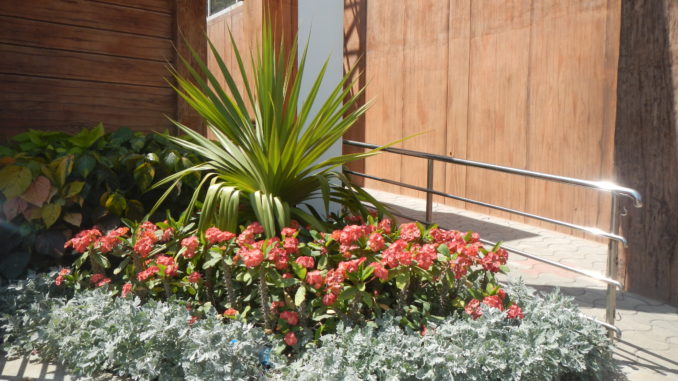
The Present Situation
All over the world, more than 75 per cent of infrastructure and buildings are ‘ill’. This impact is called “sick building” syndrome. When building is affected by indoor air pollution and is not safe for members living in it or spending most of their time in it.
How a building becomes ‘ill’ or ‘sick’? The answer is use of air conditioners, refrigerators, paints, furnitures and furnishing items. We have made these things, our necessities. Air-conditioning can trigger chemical sensitivity and respiratory illness and that early model air-conditioning systems do not recycle fresh air adequately. Re-used air spreads bacteria, viruses and chemicals from furniture and carpets exacerbating the problems of “sick buildings”.
Ill Buildings can be Problematic
Today, buildings have either poor ventilation or badly serviced air-conditioning, poor kitchen conditions, no proper outlets for smoke emissions, and contain construction materials and/or furnishings that produce noxious emissions. All in all buildings constructed in recent times are tightly sealed than older buildings, thus concentrating noxious emissions. The development and widespread adoption of improved insulation materials to maintain indoor energy efficiency. Unfortunately, however, many of these materials have compromised indoor air quality due to their tendency to “off-gas” various airborne toxins, including formaldehyde, trichloroethylene (TCE), benzene and other volatile organic compounds (VOCs). Much of the synthetic carpeting, upholstery and paint used indoors also contain sometimes noxious gases that get trapped inside air-tight homes and offices and which can build up gradually over time. And most synthetic air fresheners only make matters worse, adding even more harmful VOCs to the indoor air. With most people spending upwards of 90 percent of their time indoors, it may be no coincidence that cases of asthma and other respiratory diseases have been on the rise in recent years. Most people in developed and developing countries work, shop and relax / live in these “sick buildings”. “Sick buildings” are a potential health hazard. Health problems associated with poor air quality and low humidity, such as skin rashes, sore and itchy throats, congestion, headaches, fatigue, nausea, cause high levels of absenteeism.
Low levels of some chemicals like benzene, formaldehyde and trichloroethylene are released into virtually every modern environment. benzene is a solvent used in petrol, ink, oil, paint, plastic and rubber. Formaldehyde is present in virtually all indoor environments: urea-formaldehyde resins are used in foam insulation, particle board and pressed-wood products; it is also present in tobacco smoke, natural gas and kerosene. Trichloroethylene is used in metal degreasers, drycleaning solvents, inks, paints, lacquers, varnishes and adhesives. Recent environmental studies have shown that air pollution indoors is a major course of public exposure to air pollution. Sustained exposure to these chemicals causes chronic health problems.
Living Plants can Cure Ill Buildings
It is a fact now that living plants convert the carbon dioxide we exhale to oxygen, which is vital to our survival. Continuing to take out the solution, living plants can solve the problems which are associated with “sick buildings”. Living plants do reduce the levels of hazardous chemicals. When suitable plants are placed correctly, they will reduce not only the toxicity levels in poorly ventilated buildings but also increase the effectiveness of existing air conditioning systems. Leaves and roots of the plants and soil bacteria work together to take in airborne pollutants, process them and then release clean air. Plants also release moisture, providing a natural means of maintaining correct humidity levels indoors. At workplaces, by using plants a high standard of air quality can be maintained. This ensures employers experiencing a high level of employee productivity.
Chemicals (per cent) removed by plants from a selaed chamber during 24 hr period:
| Formaldehyde % |
Benzene % |
Trichloroethylene % |
|
| Dracaena massangeana (Happy Plant) |
70 | 21.4 | 12.5 |
| Dracaena deremensis (Janet Craig) |
50 | 70 | 20 |
| Ficus Benjamina (Weeping Fig) |
47.4 | 30 | 10.5 |
| Spathiphyllum (Peace Lily) |
50 | 80 | 23 |
| Scindapsus aureus (Golden Pothos) |
67 | 67 | 9.2 |
| Chrysanthemum morifolium | 61 | 53 | 41 |
*Table Source: NASA
Many other plants will also improve indoor air quality. NASA is continually testing other plants. Interior Plantscapers can advise on the best plants for you to use.

Good
I love this project for so many reasons – recycling, trrncpaaensy and simplicity. I've posted two photos of your finished clutch and a link back to your tutorial and blog on my Tumblr blog. It's featured on Tumblr in the DIY tag.